Why the charts say now might be the time to buy emerging market stocks
.png)
EMs offer superior growth
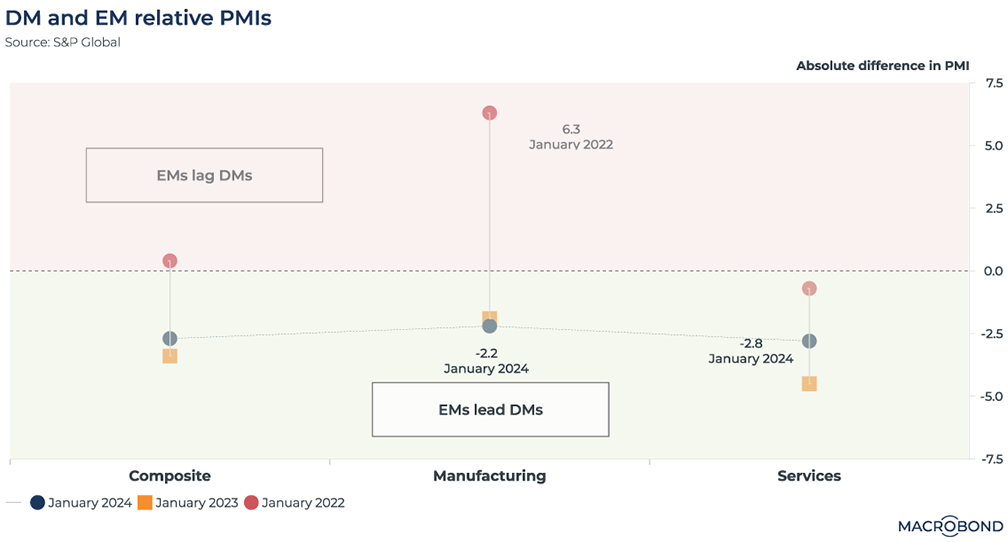
EMs offer better growth prospects than DMs, according to this analysis of Purchasing Managers’ Index (PMI) data.
DMs have experienced significant challenges recently, with weakness in the eurozone and the UK and Japan falling into technical recession since the second half of last year.
By contrast, EMs have shown resilience in the face of global headwinds such as higher borrowing costs, worsening trade conditions and inflation.
However, various PMI indicators have exhibited different trends over the last two years. The Services PMI for EMs has consistently outperformed that of DMs. While DM Manufacturing was robust in January 2022, EM Manufacturing has taken the lead since last year.
The Composite PMI for January 2024 also shows how EMs are outperforming DMs.
Inflation generally easing across EMs
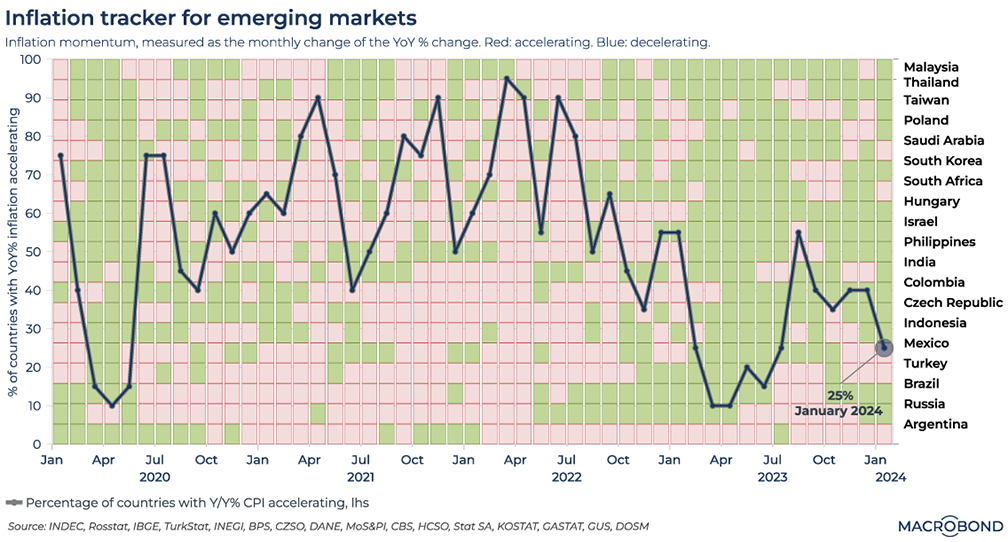
Inflationary pressures are easing across EMs following a peak in response to the Ukraine conflict in March 2022.
This is due to a combination of factors including lower commodity prices, the stabilization or strengthening of EM currencies against the US dollar and other major currencies, tighter monetary policy and more efficient supply chains.
A full three-quarters of EM economies posted lower headline Consumer Price Indices in January 2024 compared to the previous month. Major Asian and Latin American EMs are also experiencing inflation below their long-term trends.
Over the last four years, EMs have seen more inflation volatility than DMs for a number of reasons including pandemic-related supply disruptions and higher food prices.
EM equities appear undervalued
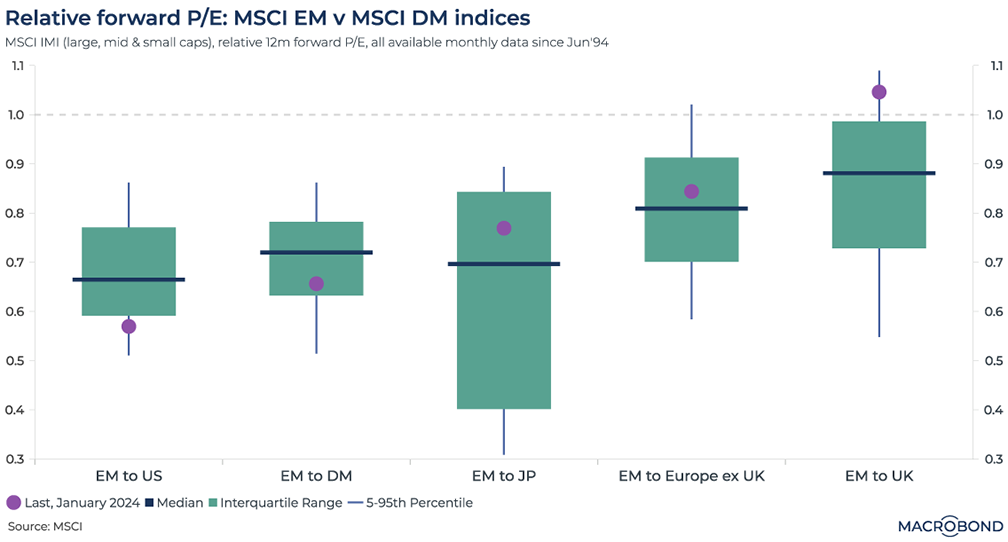
Now could be the time to buy EM stocks, with valuations looking attractive based on this analysis of MSCI indices’ relative forward price to earnings (P/E) ratios.
Despite a more favorable growth outlook, EM equities continue to trade at a discount to their DM peers due to perceived risks, offering potential opportunities for investors seeking value.
The current EM forward P/E ratio is at a greater discount relative to DM than the 30-year median, indicating potential underpricing.
However, it is worth noting that forward P/E ratios in EMs vary significantly by country. This is due to a range of factors including individual countries’ growth prospects, monetary policies and political stability.
Financial stability is improving in EMs
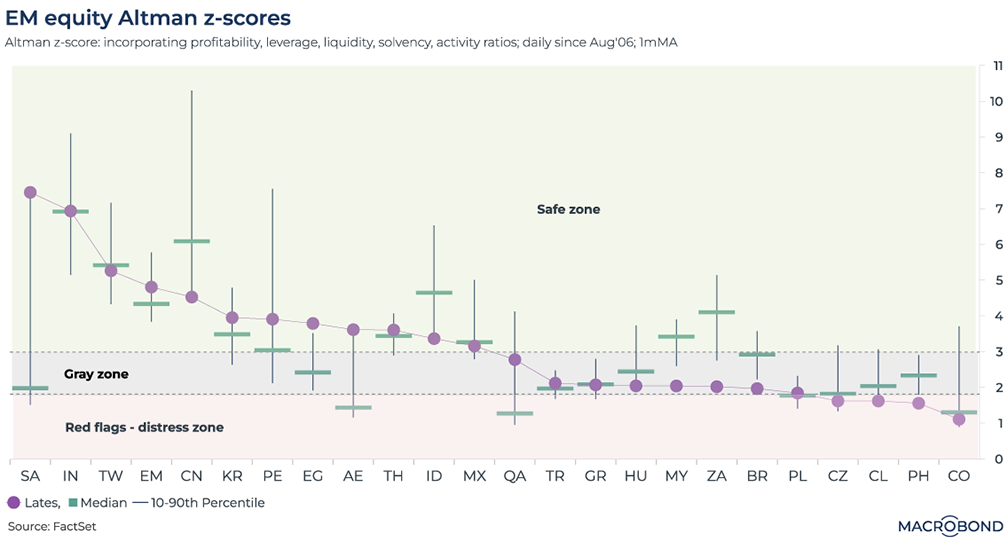
EM companies are improving their financial stability, according to the Altman z-score. This is a formula for determining whether a company is heading for bankruptcy within the next two years by considering profitability, leverage, liquidity, solvency and activity ratios.
The aggregate EM z-score is at 4.8, higher than the 4.3 average since 2006. Values look significantly better if considered for private non-manufacturing companies.
Key factors affecting z-scores in EM include economic policies, external debt levels, commodity dependence and the impact of the Covid-19 pandemic.
Are commodities set to stabilize?
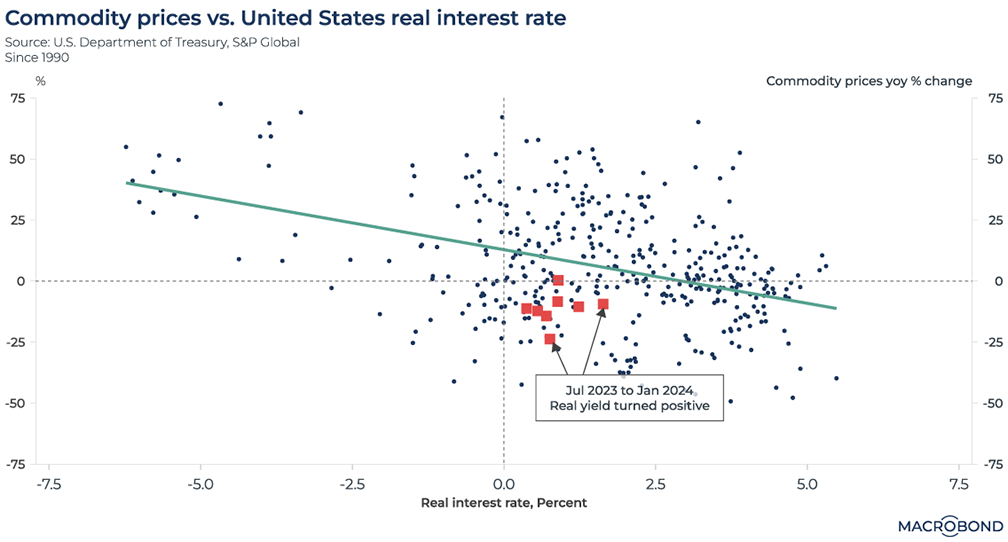
This chart shows the relationship between commodity prices and the US real interest rate, highlighting the inverse correlation between commodity returns and US interest rates.
Low real interest rates reduce the costs of holding inventory and investing in commodities, making them more appealing to investors, thus increasing demand and prices. Such conditions often contribute to a weakening of the dollar, making commodities more affordable for holders of other currencies. This also makes yield-generating assets less attractive, prompting investors to explore alternatives, including commodities.
The chart shows that the US 10-year real yield turned positive from July 2023, with inflation decelerating. Commodity returns were negative during this period.
While a balance between growth-led demand and monetary easing, leading to lower yields, should help stabilize commodities, a range of risks could impact commodity returns. These include geopolitical risks, volatile shipping costs and uncertain weather conditions.
1 topic
.png)
Macrobond delivers the world’s most extensive macroeconomic & financial data alongside the tools and technologies to quickly analyse, visualise and share insights – from a single integrated platform. Our application is a single source of truth for...
Expertise
.png)
Macrobond delivers the world’s most extensive macroeconomic & financial data alongside the tools and technologies to quickly analyse, visualise and share insights – from a single integrated platform. Our application is a single source of truth for...
.png)